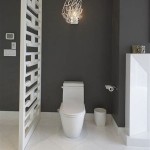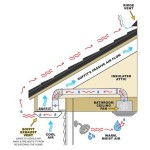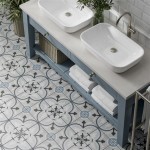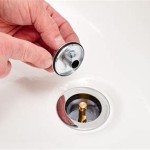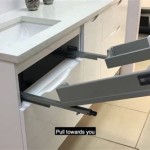Bathroom Privacy Screen Ideas: Creating Sanctuary in Your Space
Bathroom privacy is a crucial aspect of home design, impacting comfort, security, and overall relaxation within the space. While walls and doors traditionally provide this privacy, creative privacy screens offer stylish and functional alternatives or enhancements. These screens can be particularly useful in shared bathrooms, large bathrooms, or bathrooms with windows facing neighboring properties. This article explores various bathroom privacy screen ideas, focusing on materials, designs, and applications.
Types of Bathroom Privacy Screens Based on Materials
Material choice is paramount when selecting a bathroom privacy screen, as it directly affects durability, water resistance, aesthetics, and maintenance requirements. Certain materials are more suitable for the humid environment of a bathroom than others. Here are some detailed considerations:
Glass: Glass screens offer a modern and elegant solution. Options include frosted glass, textured glass, and patterned glass, providing varying levels of obscurity. Frosted glass, for example, diffuses light while completely obscuring the view. Textured glass, such as rain glass or hammered glass, adds visual interest and obscures shapes without completely blocking light. Patterned glass offers a decorative element while also providing privacy. Tempered glass is recommended for safety, as it is less likely to shatter and breaks into small, relatively harmless pieces if it does. Glass screens are generally easy to clean with standard glass cleaner and a soft cloth.
Wood: Wood screens offer a natural and warm aesthetic. However, untreated wood is susceptible to moisture damage, making it necessary to use water-resistant varieties like cedar, teak, or redwood. These woods contain natural oils that repel water and resist rot. Additionally, the wood should be sealed with a waterproof sealant to further protect it from moisture. Wood screens can be constructed in various designs, including slatted screens, lattice screens, and solid panels with decorative cutouts. Regular cleaning and resealing are essential to maintain the wood's appearance and prevent degradation. Furthermore, proper ventilation in the bathroom is crucial to minimize moisture buildup.
Metal: Metal screens, typically made of aluminum or stainless steel, are durable and water-resistant. Aluminum is lightweight and rust-resistant, making it a practical choice for bathroom environments. Stainless steel is even more resistant to corrosion and offers a sleek, modern look. Metal screens can be powder-coated in various colors to match the bathroom's décor. Designs range from simple geometric patterns to intricate laser-cut designs. Metal screens are easy to clean with soap and water and require minimal maintenance. However, sharp edges should be avoided to prevent injury.
Acrylic and Plastic: Acrylic and plastic screens offer a lightweight and cost-effective alternative to glass or wood. Acrylic is a durable and shatter-resistant plastic that can be molded into various shapes and sizes. It is also available in a range of colors and opacities. Plastic screens are generally less expensive than acrylic but may not be as durable. Both acrylic and plastic screens are easy to clean and maintain. However, some plastics may be susceptible to scratching or discoloration over time. These screens are suitable for smaller bathrooms or as temporary privacy solutions.
Fabric and Curtains: Fabric screens, such as curtains or room dividers with fabric panels, can provide a soft and flexible privacy solution. Choosing moisture-resistant fabrics like polyester or linen blends is essential. These fabrics are less likely to absorb moisture and develop mold or mildew. Curtains can be hung from a track or rod, allowing them to be easily opened or closed as needed. Room dividers with fabric panels offer a more substantial privacy screen. Fabric screens require regular cleaning to prevent the buildup of dust and mildew. Machine-washable fabrics are the most convenient for maintenance.
Plants: Living walls or strategically placed potted plants can create a natural and visually appealing privacy screen. Plants like bamboo, ferns, and snake plants thrive in humid environments and provide dense foliage for privacy. A tiered plant stand or a wall-mounted planter can be used to create a vertical garden effect. Plants require regular watering, fertilization, and pruning to maintain their health and appearance. Proper drainage is essential to prevent overwatering and root rot. Consider the lighting conditions in the bathroom when selecting plants, as some species require more sunlight than others.
Design Considerations for Bathroom Privacy Screens
Beyond the material, the design of the privacy screen is critical for achieving the desired level of privacy and aesthetic appeal. Design considerations include the height and width of the screen, the pattern or texture, and the overall style of the bathroom.
Height and Width: The height and width of the privacy screen should be proportional to the size of the bathroom and the area being screened. A full-height screen provides maximum privacy, while a shorter screen may be sufficient for partially obscuring the view. The width of the screen should be adequate to cover the area being screened, ensuring that there are no gaps that compromise privacy. Measure the space carefully before purchasing or constructing a privacy screen to ensure a proper fit. Consider the placement of fixtures and fittings when determining the dimensions of the screen.
Patterns and Textures: Patterns and textures can enhance the aesthetic appeal of the privacy screen while also providing varying levels of obscurity. Geometric patterns, floral designs, and abstract patterns can add visual interest to the bathroom. Textured glass, such as rain glass or hammered glass, diffuses light and obscures shapes. Perforated metal screens create a modern and airy look while also providing privacy. The choice of pattern or texture should complement the overall style of the bathroom. Consider the scale of the pattern in relation to the size of the screen and the bathroom.
Style and Aesthetics: The style of the privacy screen should harmonize with the overall aesthetic of the bathroom. A modern bathroom may benefit from a sleek glass or metal screen, while a traditional bathroom may be better suited to a wooden or fabric screen. Consider the color palette of the bathroom when selecting the color of the screen. Neutral colors like white, gray, and beige are versatile and can complement a variety of styles. Bold colors can add a pop of personality to the bathroom. The style of the screen should also reflect the personal preferences of the homeowner.
Placement and Installation: The placement and installation of the privacy screen should be carefully considered to ensure optimal privacy and functionality. A screen can be placed near a window, around a bathtub, or to separate the toilet area from the rest of the bathroom. Consider the direction of the light when positioning the screen, as the angle of the light can affect the level of privacy. The screen should be securely installed to prevent it from falling or tipping over. Consult a professional if you are unsure about the installation process. Ensure that the screen does not obstruct access to essential fixtures or fittings.
Applications of Bathroom Privacy Screens
Bathroom privacy screens can be used in various ways to enhance privacy and functionality. Some common applications include:
Window Privacy: Privacy screens can be installed in front of windows to block the view from outside. This is particularly useful in bathrooms with windows facing neighboring properties or busy streets. Frosted glass, textured glass, or curtains are effective options for window privacy. The screen should be sized to cover the entire window and securely attached to the window frame or wall. Consider the direction of the sunlight when selecting the type of screen, as some materials may block more light than others.
Bathtub Privacy: Privacy screens can be used to create a private bathing area around a bathtub. This is particularly useful in large bathrooms or bathrooms with multiple users. A freestanding screen or a wall-mounted screen can be used to enclose the bathtub area. The screen should be tall enough to provide adequate privacy while sitting or standing in the tub. Consider the material of the screen in relation to the water exposure, as some materials may be more resistant to moisture than others.
Toilet Privacy: Privacy screens can be used to separate the toilet area from the rest of the bathroom. This is particularly useful in shared bathrooms or bathrooms with open layouts. A partial wall, a freestanding screen, or a curtain can be used to create a toilet enclosure. The screen should be positioned to provide privacy while using the toilet. Consider the size of the toilet area when determining the dimensions of the screen. Ensure that the screen does not obstruct access to the toilet or other fixtures.
Shower Privacy: While shower doors and curtains are the most common examples of shower privacy, screens can be incorporated into the shower design. For example, a glass block wall can provide both privacy and light. A partial tile wall can also act as a privacy screen within the shower enclosure. These permanent fixtures require careful planning during the bathroom renovation or construction phase. Ensure proper waterproofing and drainage to prevent water damage.
Room Dividers: In larger bathrooms, privacy screens can function as room dividers, creating distinct zones for different activities. A freestanding screen, a curtain, or a partial wall can be used to separate the vanity area from the bathing area or the toilet area. This can improve the functionality and organization of the bathroom. Consider the overall layout of the bathroom when determining the placement of the room divider. Ensure that the divider does not obstruct traffic flow or make the bathroom feel cramped.
Selecting the right bathroom privacy screen involves considering material properties, design aesthetics, and functional requirements. By carefully evaluating these factors, one can create a private and relaxing bathroom environment.

15 Bathroom Privacy Screens Ideas Inspiration Screen Design

Toilet Privacy Screen

Here S Not Looking At Loo Kid 12 Toilet Privacy Options

Here S Not Looking At Loo Kid 12 Toilet Privacy Options

Ensuite Bathrooms 6 Ideas For Open Plan Designs Grand

Fancy Privacy Options For The Bathroom Decoist
:max_bytes(150000):strip_icc()/thriftdiving-d99c78db0a79456fa22ebab74147cb74.jpg?strip=all)
10 Diy Privacy Screen Plans

5 Unique Takes On Toilets Home Services Unltd Llc

Toilet Privacy Screen Spa Bathroom Design Style

Fancy Privacy Options For The Bathroom Decoist
Related Posts

